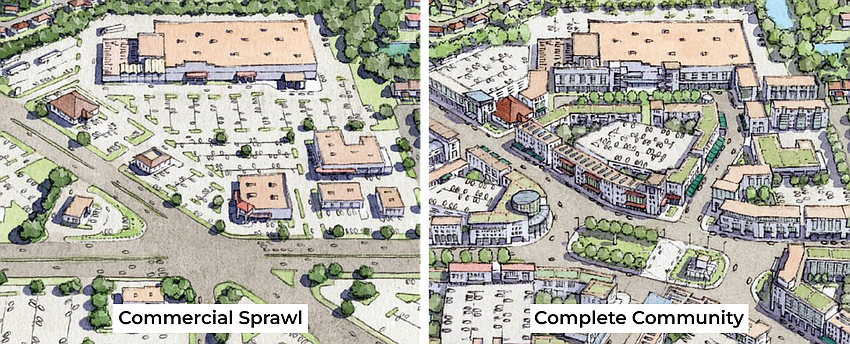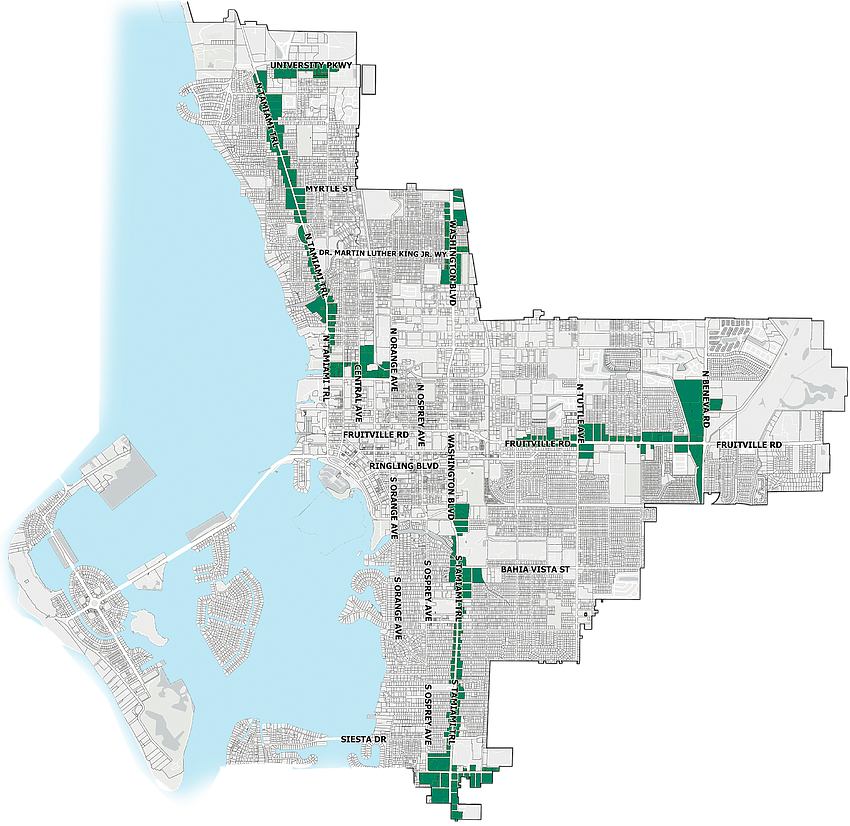- July 26, 2024
-
-
Loading

Loading
By spring 2024, Sarasota’s affordable housing incentives will likely expand from the downtown zoning districts to commercial corridors and centers identified by the city’s amended comprehensive plan.
On Nov. 16, planning staff members held a webinar to detail for residents the proposed zoning text amendment that would provide density and height bonuses to developers that include affordable housing in mixed-use projects in areas extending to the north, south and east city limits.
The density bonuses would be available to developments within zoning districts with a future land-use classification of urban mixed use.

The webinar came a day after staff secured sign-off from the city’s Development Review Committee and about six weeks before the matter appears before a Jan. 8 City Commission workshop.
If approved, the amendment will allow additional density in exchange for developers including housing priced affordably as defined by income tiers relative to area median income, effectively not exceeding 30% of gross household income, including utilities.
The identified parcels are located along North and South Tamiami Trail, University Parkway, Washington Boulevard, 10th Street between Central and North Orange avenues, Fruitville Road east of downtown and Beneva Road.
The strategy is to provide workforce-priced housing opportunities within or near employment centers and along public transit corridors.
“The Sarasota Chamber recently did an affordable housing survey among young professionals, and it was found that over 51% of them are considered cost burdened, which means that they're spending over 30% of their income on their housing,” said Planning Director Steven Cover. "From a transportation standpoint, the survey revealed that the average round trip commute was 28 miles, with 20% traveling over 40 miles, so obviously there's concern there from a transportation standpoint.”
Any qualifying developments must include one-third each affordable units priced at 80% or below, 81%-100% and 101%-120% AMI.
In October 2022, the City Commission adopted the comprehensive plan amendment that created the urban mixed-use (MU) future land-use classification, which provides for mixed-use development in commercial centers and along commercial corridors. It allows for attainable housing density bonuses up to three times the base density of the MU future land use classification.

“The goal is to incentivize attainable housing," said Senior Planner Brianna Dobbs. “We also see that existing commercial centers and corridors consist predominantly of one type that is typically either office or commercial. However, it is envisioned that these areas will transition to a varied mix of land uses over time, and the text of the comprehensive plan recognizes that the building intensities and densities must be sensitive to adjacent nearby uses to assure for functional and aesthetic compatibility.”
Most questions from public participants centered on concerns of overflow traffic and parking on neighborhood streets — especially along South Tamiami Trail — vehicle noise and noise emanating from higher density developments.
Staff members reminded residents that commercial development is already permitted by right on urban mixed-use parcels and future land-use parcels, and that the text amendment is intended to encourage combined residential and commercial uses with an eye toward addressing the affordable housing crisis.
Curious about the effectiveness of the approved density program for downtown neighborhoods, resident Peter Blanton asked if staff members were aware of any developers having filed plans that include affordable housing in those zoning districts.
“We have received an application that is looking to take advantage of the density bonus,” Dobbs said. “ I don't have details on it because it is relatively new.”
In addition to density bonuses, parking space minimums are more stringent than in downtown zoning districts. For MU-1, MU-2 and MU-3, 1.25 spaces are required for each dwelling unit, one-half space for each designated attainable. For non-residential space, one parking space is required for each 350 square feet of floor area.
The next steps for the proposed text amendment are the Jan. 8, 2024 City Commission workshop, a hearing before the Planning Board on Jan. 24 and City Commission consideration next spring.